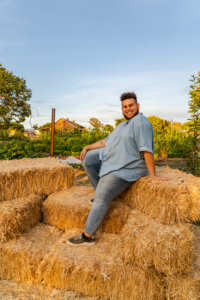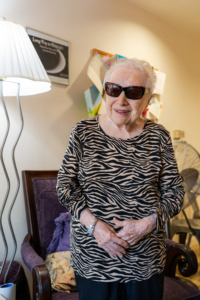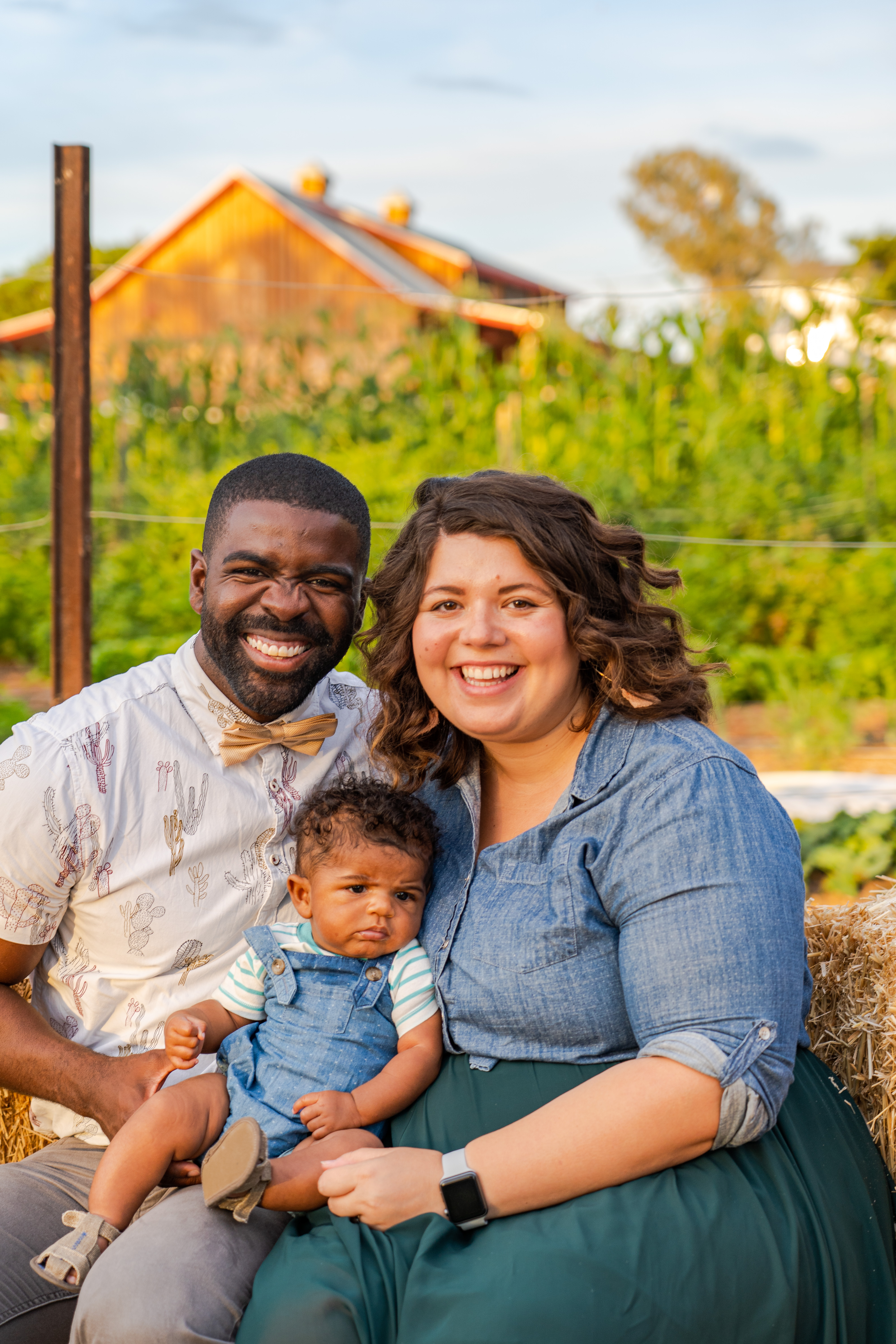Welcome to the Stroll-thru Shushan Reception. Now it’s time to taste wine with merriment!
A Special Thank You – All wine tasting resources provided by Adam Montefiore, a wine trade veteran, who has advanced Israeli wine for 35 years. He has been described as ‘the ambassador of Israeli wines’ and as ‘the English voice of Israeli wine’. Since 2010, he has been the wine writer of the Jerusalem Post. www.adammontefiore.com
There’s no right or wrong way to taste wine.
It’s this simple — do you like what you’re drinking or do you not like what you’re drinking?
If you’re tasting with others, talk about the wine. Be confident in what you think.

Look – Swirl – Smell – Sip
Look to get a sense of its color
Start by looking at the shade of red wine in your glass. If the wine is light red, even approaching pink, it should taste light and bright. It may even be a little tart or “fresh” tasting and that is because the lighter the red of a wine, the less likely that it was ever aged in oak, and oak is what helps round and mellow a wine. As the hue of the red wine gets darker and darker, approaching the colors of maroon and purple, the red will become much bolder and richer. These types of red wine are the ones you think of when you think red wine and steak dinner, and the darker and deeper the color, the longer they’ve spent aging in an oak barrel.
Swirl and agitate the wine
No matter how you swirl the wine, your technique is completing an important next step in the tasting process: getting more oxygen into the wine. Oxygen is a friend and also an enemy of wine— frenemy. In the beginning, oxygen is really great for a wine because as soon as a wine encounters oxygen, it begins to break down, which most people refer to as a wine “opening up.” As the wine opens, it gives off its aromas and also softens, which is good. But if you let a wine sit in a glass exposed to oxygen for too long, say overnight, the oxygen will fully oxidize the wine, ruining it and leaving it with an unpleasant taste that can be flat and even bitter.
Smell has a profound effect on the way our brain processes flavor
When you smell a wine, you’re preparing your brain for the wine you’re about to taste.
When you go to smell the wine, stick your nose all the way into the glass and close your eyes — sure you might feel silly doing it, but you’re going to notice a lot more smells this way — then breathe in deep. As you smell the wine, think about what scents you’re picking up, and keep in mind that there are no wrong answers! You may smell prunes, cherries, strawberries, peppers, plums or tobacco. You may say you just smell grapes, and that is totally fine too. Your brain can only pick up scents that are in your memory, meaning they are scents you’ve smelled before or smell often. That’s why ten people could be sitting around a table smelling the same wine and say they smell ten different things!
Sipping Wine
Take a sip from your glass and let the wine sit in your mouth for a moment. At this stage, some people like to swish the wine around in their mouth, like they’re using mouthwash. They’re doing this so the wine touches all of their taste buds, but it’s not necessary. The main idea here is to let the wine linger in your mouth so that you take a moment to think about it. What does it taste like? Do you taste any of the smells you picked up? Is the wine drying your mouth out (if this is happening, it means that the wine is strong in tannins)? Then swallow.
More about the winery
Binyamina Winery was founded in 1952 by Joseph Zeltzer. He immigrated to Israel from Hungary infused with a passion to continue being a winemaker, as he’d been in Hungary. Zeltzer originally named the winery Eliaz, after his son who died during Israel’s War of Independence in 1948. He soon began making wine in the center of what was then considered Israel’s official wine region, Binyamina.
Zeltzer discovered an abandoned jasmine flower perfume factory that he used for his operations, and he started to produce wines with the vineyards at this doorstep.
Zeltzer’s winery originally specialized in sweet wines, simple table wines and liqueurs, and was made from grapes only from vineyards in the Binyamina region. At that time, all winemakers had to work through the Carmel Mizrachi wine cooperative. David Ben Gurion, Israel’s first Prime Minister, personally intervened on Zeltzer’s behalf to pass a law allowing Zeltzer to receive a small amount of grapes for independent wine production. The winery became known mainly for its fine quality liqueurs and brandy produced under the Hard Nut Liqueur label, named in honor of Ben Gurion, who was famously known as a “hard nut to crack.”
Although it always remained privately owned, the winery changed hands several times until the mid-1990s. Bankers, real estate professionals and movie producers viewed the winery as an Israeli treasure where agriculture, industry and Zionism converged. It was finally purchased in the early 1990s by movie industry executives, who gained full control in 1996. Wasting no time, they invested enormous resources to transform Binyamina into one of Israel’s leading wineries. Over the ensuing 14 years, they invested in upgrading the vineyards to obtain the best quality raw materials, purchasing the finest wine production equipment and establishing one of Israel’s finest barrel cellars. They also renamed the winery, which has been known as Binyamina Winery since the mid-1990s.
In August 2008, the winery was purchased by private investors who recognized the winery’s immense potential and sought to continue its role as a leader in Israel’s wine sector. To this day, they continue to invest regularly and unsparingly in the vineyards, premises, equipment, and human resources.
The Wines:
Cabernet Sauvignon:
“Deep red in color with aromas of lush berries laced with pepper. A full flavored, complex, balanced, and easy drinking wine.”
Fresh, Black Fruit, Spice, Medium-bodied.
ABV 13%
Merlot:
“Deep red color with a purple hue, this wine boasts a fruity aroma with a hint of oak and a rich, balanced flavor.”
Fresh, Red and Black Fruit, Spice, Vanilla, Medium-bodied.
ABV 13%
Chardonnay:
“A crisp and aromatic Chardonnay fermented in stainless steel containers with notes of lemon, apple, and vanilla. Lovely with refreshing tartness.”
Crisp, Lemon, Apple, Vanilla, Light-bodied.
ABV 12%

 Black, Jewish and Queer. These three identities weave the fabric of who I am, but it took a long time to believe that they could exist together.
Black, Jewish and Queer. These three identities weave the fabric of who I am, but it took a long time to believe that they could exist together. Lee and Toni Leichtag established the Leichtag Foundation in 1991 following the sale of their business. Lee and Toni were lifelong entrepreneurs with a passion for innovation and for supporting talent. They believed that only with big risk comes big reward. Both born to families in poverty, Toni to a single mother, they strongly believed in helping those most in need and most vulnerable in our community. While they supported many causes, their strongest support was for young children and the elderly, two demographics who particularly lack voice in our society.
Lee and Toni Leichtag established the Leichtag Foundation in 1991 following the sale of their business. Lee and Toni were lifelong entrepreneurs with a passion for innovation and for supporting talent. They believed that only with big risk comes big reward. Both born to families in poverty, Toni to a single mother, they strongly believed in helping those most in need and most vulnerable in our community. While they supported many causes, their strongest support was for young children and the elderly, two demographics who particularly lack voice in our society. Lifelong Baltimoreans, Rabbi George and Alison Wielechowski and their sons, 11-year-old Lennon and 9-year-old Gideon, are more than pursuing the good life in Southern California. Having moved to San Diego more than three years ago, they are fulfilling a lifelong dream.
Lifelong Baltimoreans, Rabbi George and Alison Wielechowski and their sons, 11-year-old Lennon and 9-year-old Gideon, are more than pursuing the good life in Southern California. Having moved to San Diego more than three years ago, they are fulfilling a lifelong dream.






 You would think that as the executive director of San Diego LGBT Pride, Fernando Zweifach López Jr., who uses the pronoun they, has done all the coming out they possibly can. A queer, non-binary individual who has worked for many years on civil rights issues, López also speaks openly and often about their father’s family, Mexican-American migrant workers who tilled the fields of rural California.
You would think that as the executive director of San Diego LGBT Pride, Fernando Zweifach López Jr., who uses the pronoun they, has done all the coming out they possibly can. A queer, non-binary individual who has worked for many years on civil rights issues, López also speaks openly and often about their father’s family, Mexican-American migrant workers who tilled the fields of rural California. Stacie and Jeff Cook understand commitment. They live it.
Stacie and Jeff Cook understand commitment. They live it.
